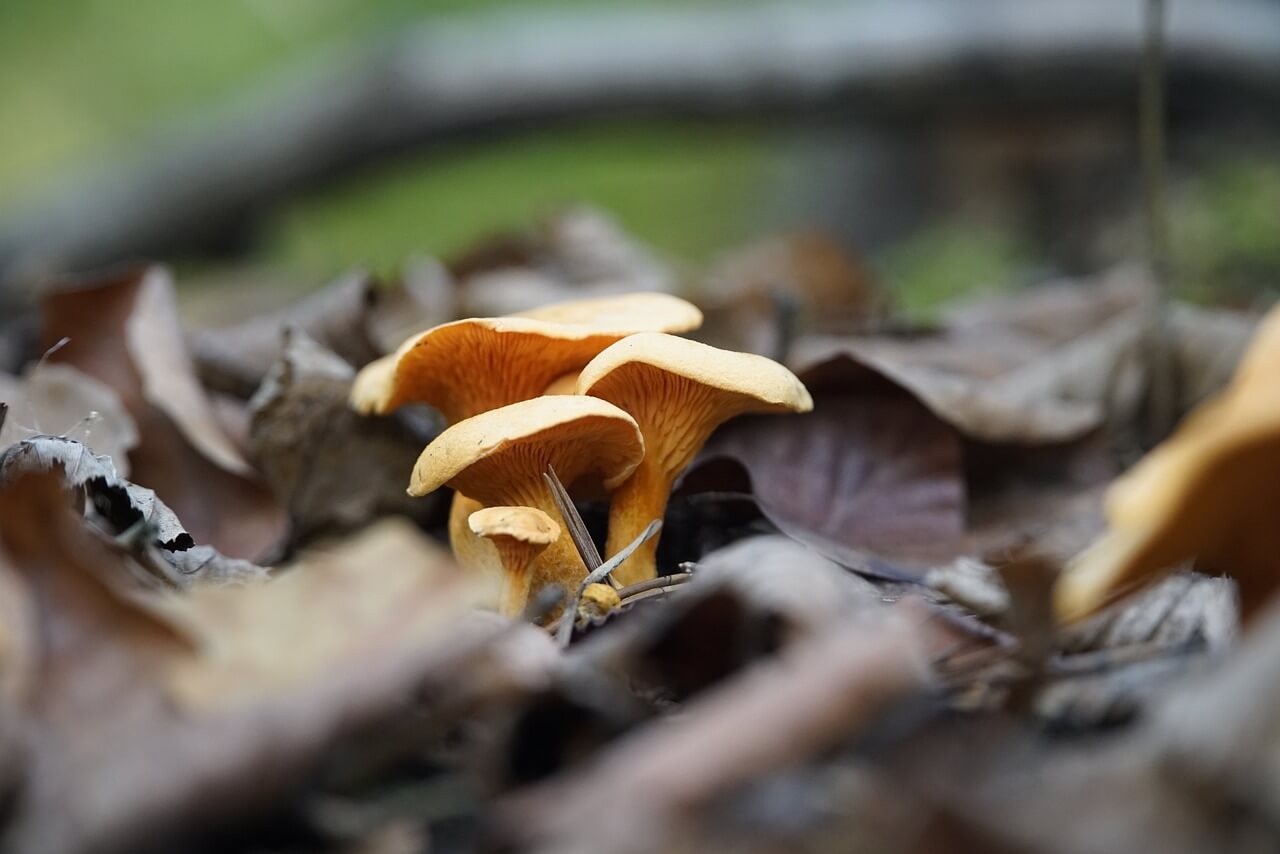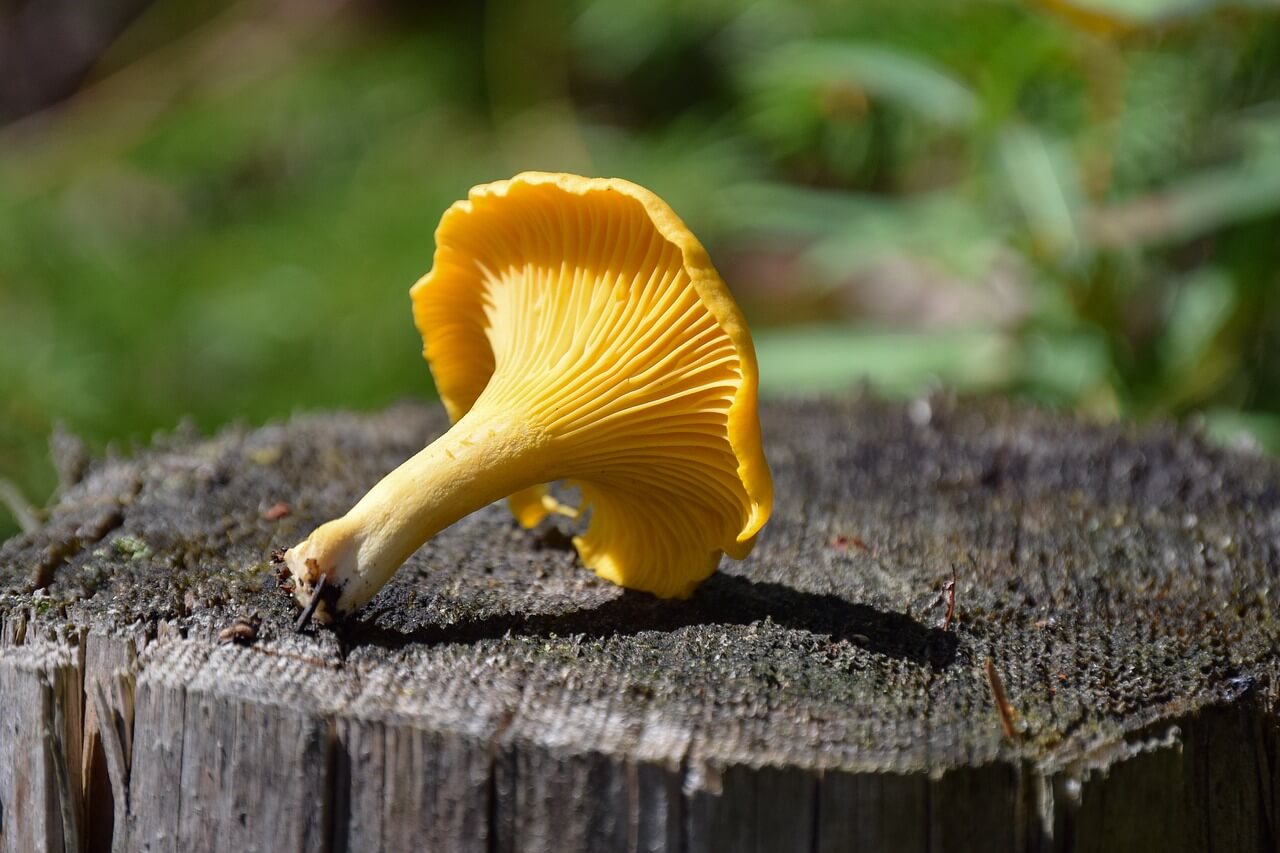You may have heard of chanterelle mushrooms, but did you know they have a close look-alike? False chanterelle mushrooms grow in similar environments as true chanterelles, and upon first glance, you may think they look like identical twins. Read on to learn more about false chanterelles and how to tell them apart from the real thing.
What You'll Learn Today
How Can You Tell Real Chanterelles from False Chanterelles?

False chanterelles are so named for a reason. If you’re not looking closely, or if you haven’t spent a lot of time foraging for mushrooms, it’s easy to get them mixed up with true chanterelles.
Luckily, if you know what you’re looking for, there are several sure ways to tell them apart. Let’s take a look at some of the most notable differences between chanterelles and false chanterelles.
False Chanterelles Have Soft Gills
If you look on the underside of the mushroom’s cap, you’ll find gills on both chanterelles and false chanterelles. But the types of gills you’ll find are quite different depending on which type of mushroom you’re dealing with.
True chanterelles have flat, narrow ridges that are firm to the touch and don’t break off easily. False chanterelle have larger, forked gills that are soft, flexible, and easy to break away by running a finger over them.
False Chanterelles Grow on Forest Debris
One major difference between chanterelles and false chanterelles is how they grow. Both types of mushroom tend to grow on forest floors and can often be found near conifers, but that is where the similarity ends.
True chanterelles have a symbiotic relationship with tree roots. For this reason, they grow out of the ground and are firmly attached to it.
False chanterelles usually grow from loose debris on the forest floor, such as decaying wood and plant materials. Because they aren’t growing directly from the ground, they may appear loose and unstable, and they will be easier to collect than true chanterelles because they aren’t firmly attached to a solid base.
False Chanterelles Have No Distinctive Odor or Taste
True chanterelles have a mild but unmistakable flavor. It’s basically a cross between fruity and peppery, and this unique flavor is largely why chanterelles are so popular among mushroom enthusiasts.
On the other hand, false chanterelles have no noticeable odor and an unmemorable taste that is generally described as earthy, mushroomy, and bitter. Some people don’t like the taste at all, while others agree that it is bland and unremarkable.
Of course, the best way to understand the differences between chanterelles and false chanterelles is to see a side by side comparison.
For a great visual and in-depth discussion of the differences, check out the following video:
Do False Chanterelles Grow in Clusters?
False chanterelles usually grow singly, but sometimes they may be found growing in small clusters. They rarely form clusters of more than 6 or 8 mushrooms, as they are not considered a typical clustering variety of mushroom.
This is one reason why false chanterelles are often confused with true chanterelles. Their growth habits are similar, as chanterelles also tend to grow singly or in small clusters.
Are False Chanterelles Edible?

False chanterelles may or may not be considered poisonous, but they aren’t recommended for eating. As mentioned above, their flavor isn’t nearly as desirable as true chanterelles, and consuming them may cause mild illness in some people.
Some mushroom experts note that false chanterelles may contain some medicinal compounds, but the mushrooms aren’t widely used for either food or medicinal purposes.
What Happens if You Eat a False Chanterelle?
It’s difficult to say. Some people experience no side effects of eating false chanterelles, while others experience mild digestive symptoms such as stomach aches and diarrhea.
Because of the possible side effects, it’s important to be careful If you’re planning to cook chanterelles for a group of people. You’ll want to make sure you actually have true chanterelles and that no false chanterelles get mixed in.
Conclusion
False chanterelle mushrooms look similar to true chanterelles, but there are several key ways to tell them apart. If you’ve never foraged for chanterelles before, it’s a good idea to learn how to tell the difference so you don’t end up with a basketful of false chanterelles.
If you’re looking for more information, here is our guide on how to clean chanterelles.
Using taste as a determining factor is dangerous and irresponsible to include in this list. People may use taste as a determining factor when gathering other mushrooms, as well, and end up poisoning themselves.
taste and spit is an established way to ID mushrooms. you have to actually digest toxicmushrooms for them to harm you
It had been 30 years, 20 of them living overseas, since I had been a regular mushroom forager, so this and a Tulane U site confirmed my find of a “mother load” of them just across the chain link fence of my backyard. At least, I hope it will “mother” more. Have lived in this house 14 years, but never saw them here before. Thank you, possums and raccoons, if you somehow helped propogate them for me.